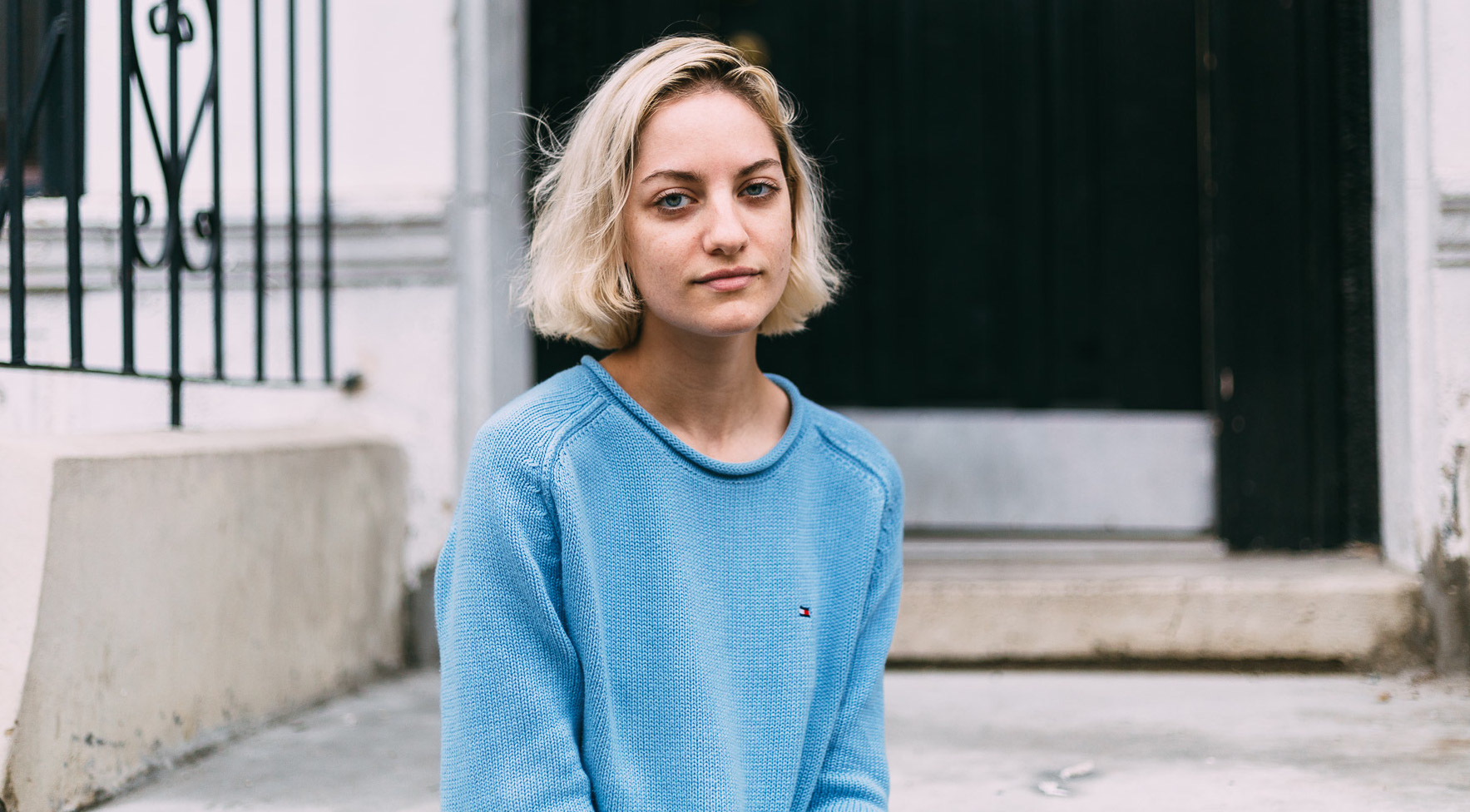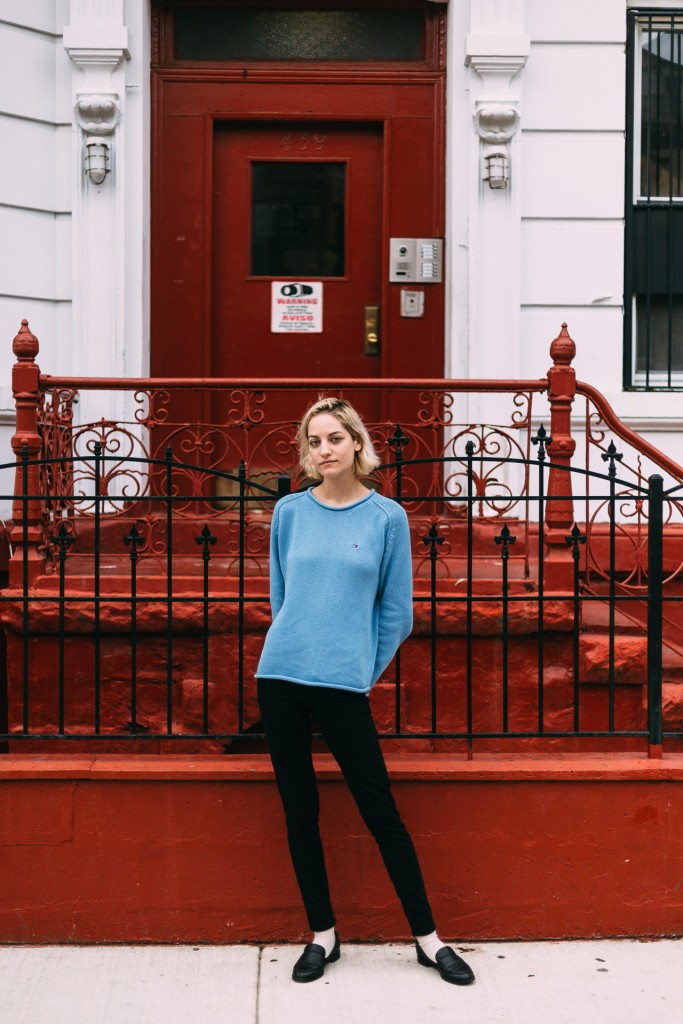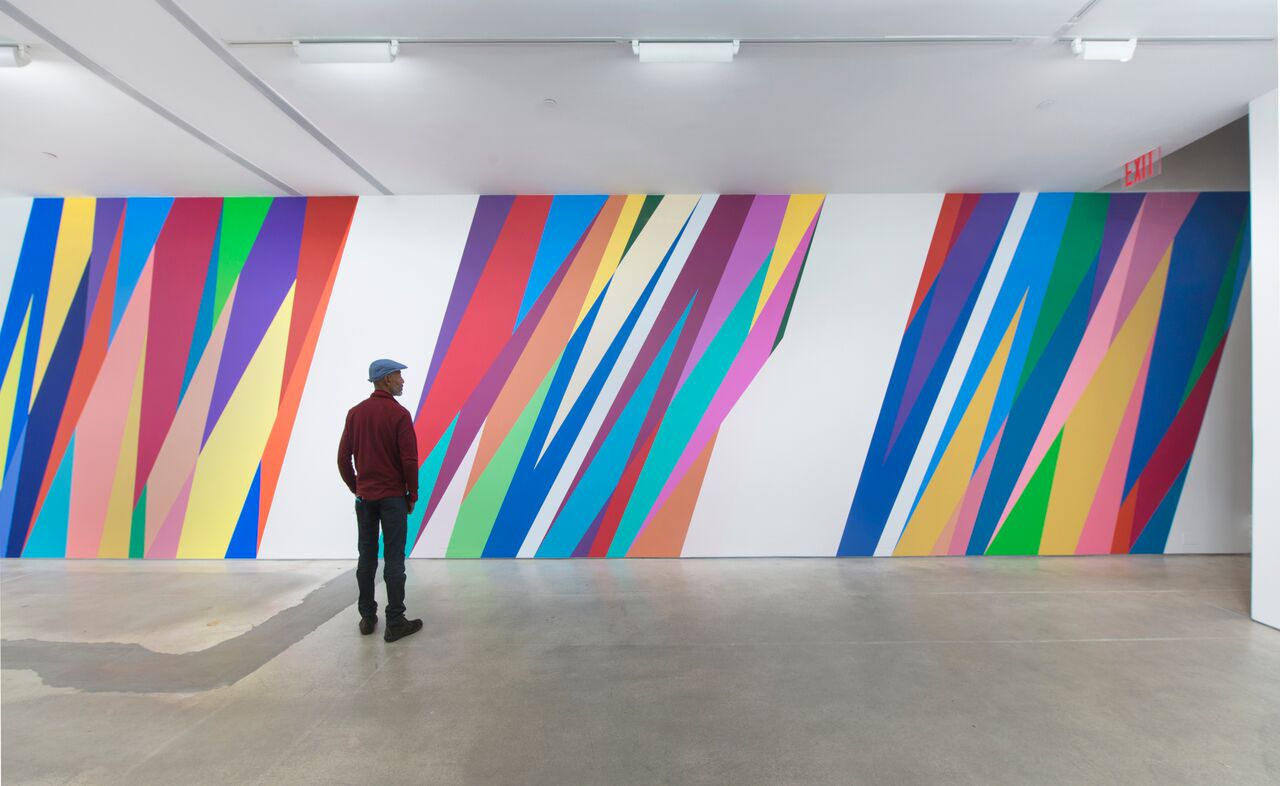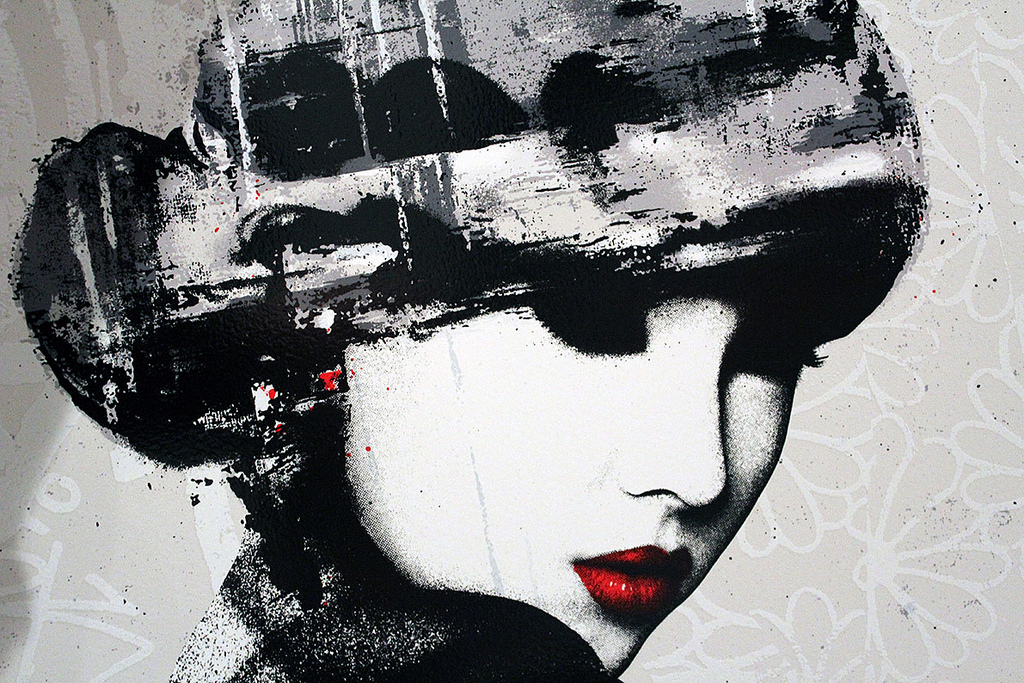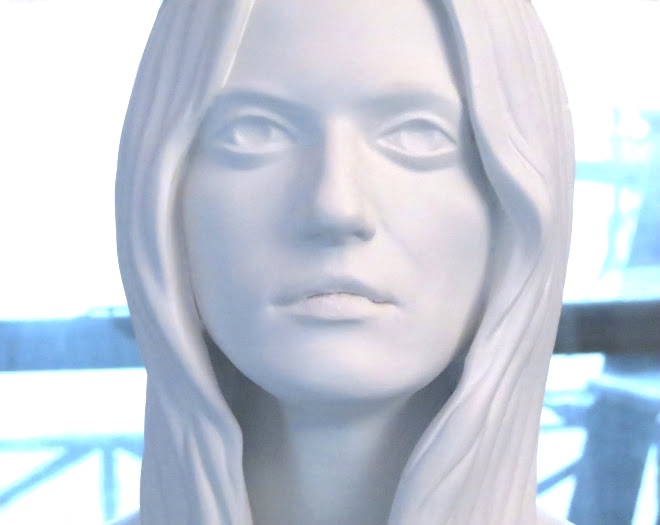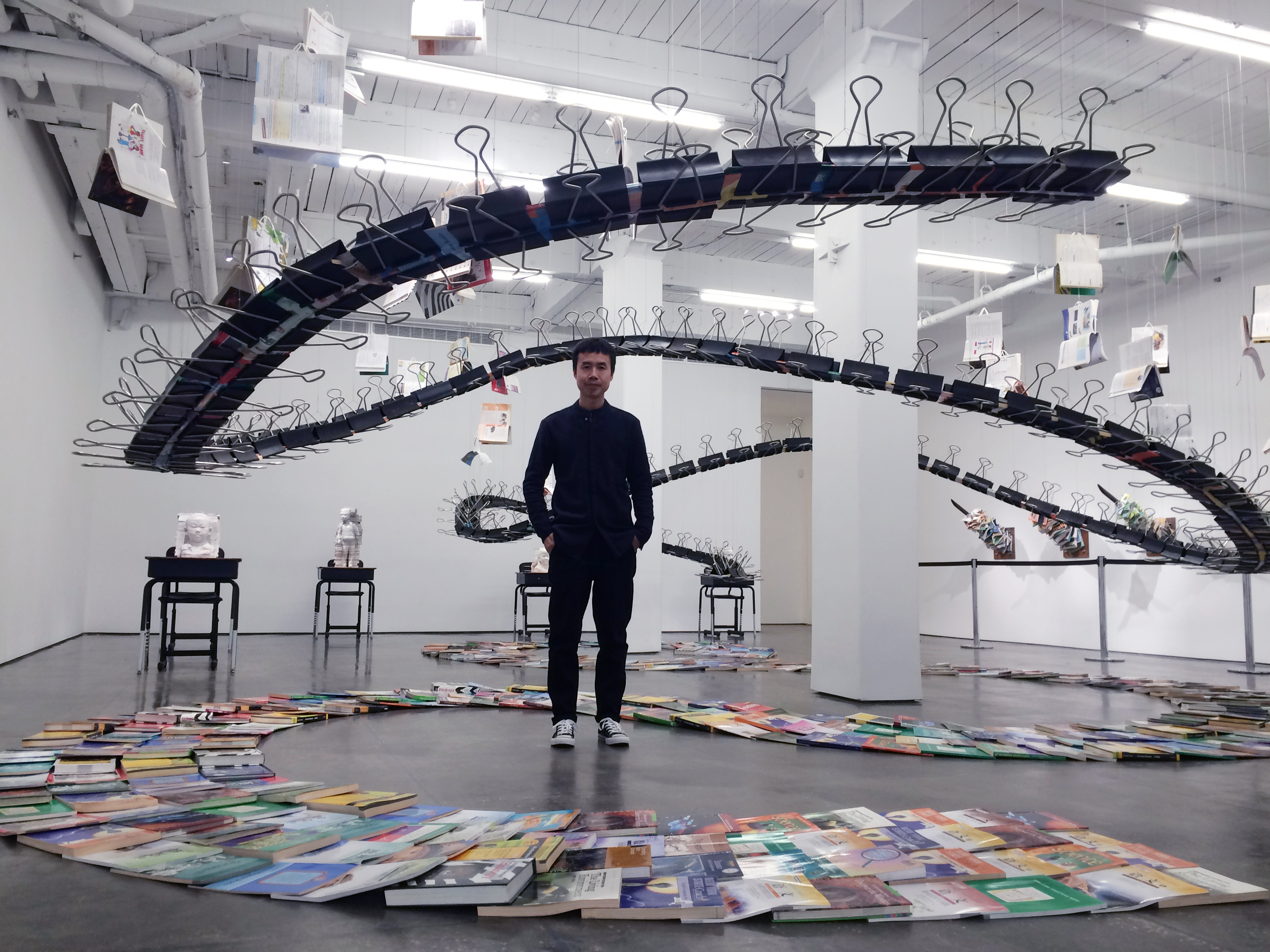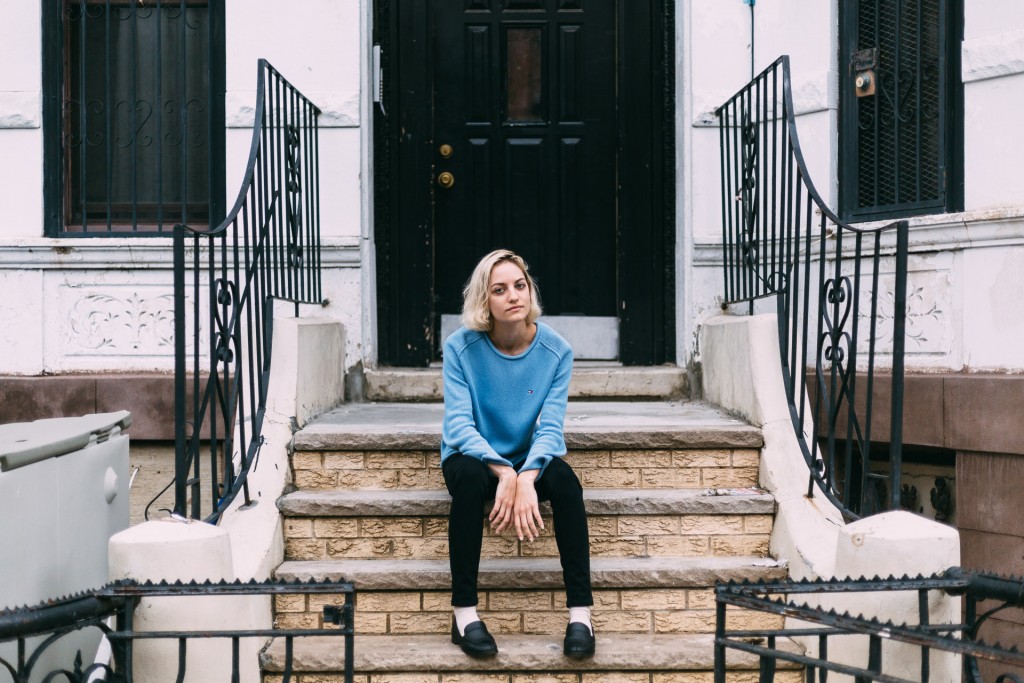
You scroll through Instagram, one click leads to another, and suddenly you’re six months deep into someone’s feed that you most certainly have never met. This is the exact scenario that played out while discovering NY-based artist, Alice Lancaster. Somewhere between her transition from brunette to blonde it became clear that this emerging artist has butt loads of talent.
Alice’s paintings are primarily minimalist representations of the female form. Early works resemble colorful figure paintings that break down women’s bodies into familiar shapes (boobs are triangles! thighs are circular!). More recent works move closer towards modern abstraction, as legs are reduced to curving lines that suggest the flexibility of a limber dancer. Her portraits pleasantly remind you of an early-career Alice Neel (a comparison this Alice found especially flattering), and her drawings narrate mundane experiences like visiting the buffet on vacation or a couple in bed with their heads buried in their respective books.
More research allowed me to paint my own picture of who Alice might be, and I was hilariously wrong on all counts. No, she’s not a model turned artist, she just happens to be photogenic. No, she does not roll with a Pink Lady-esque crew of bad ass female artists, she’s sort of a lone wolf. And no, she’s not even close to being too cool for school, her work just happens to have been commissioned by a whole slew of hip artists and brands (American Apparel and Calvin Klein, to name a few). So where better to set the record straight than the artist’s intimate studio apartment in Brooklyn, on her bed to be exact.
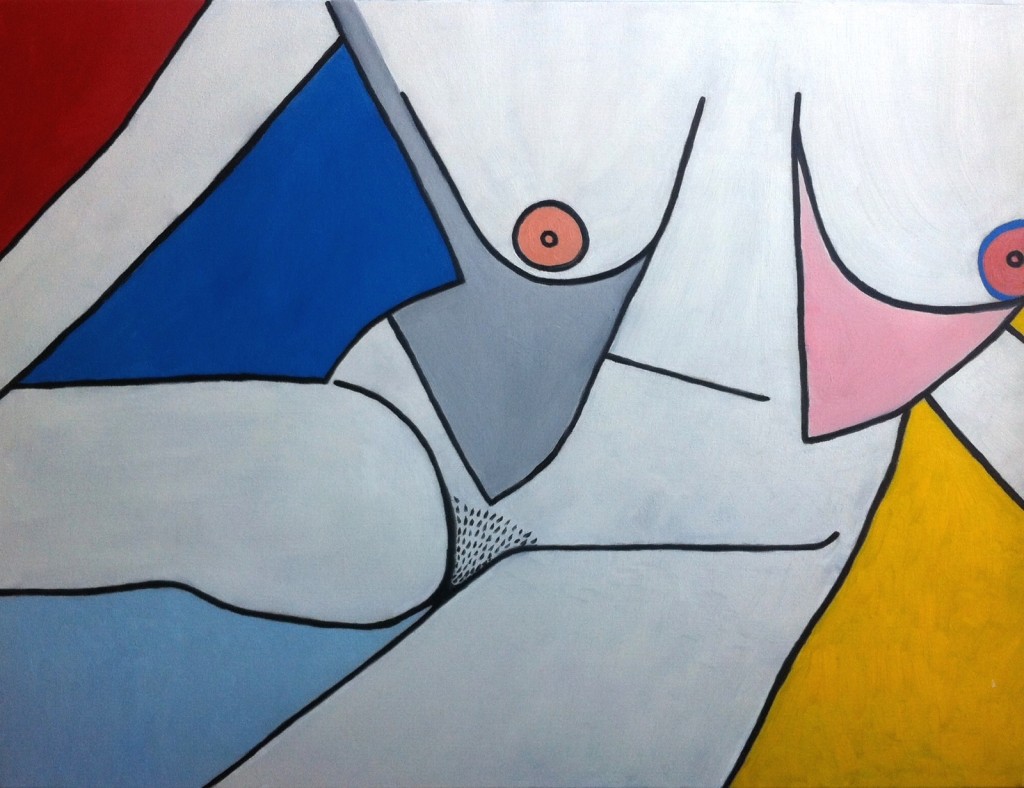
Art Report: Let’s start at the beginning. Tell me where you’re from and how you got started.
Alice Lancaster: I’m from St. Louis and I come from a family of artists. My dad is an artist, my aunt, my grandma – it’s sort of in the blood. So when I was 21, I moved to Chicago and went to Columbia College for about a year. I took figure drawing classes and fashion merchandising ,but quickly I was like “oh this is not for me.” I stayed in Chicago for about 5 years ,but I hardly drew or painted – I primarily took a lot of photos. Then about 3 years ago I decided to move to New York to take my art seriously.
AR: Things took off pretty quickly for you in those 3 years. Your name comes up often when discussing some of New York’s most exciting creative females of the Petra Collins variety.
AL: Yeah, it’s kind of crazy. Petra and I were Flickr friends when she was a teenager. She had a few blogs and asked to feature my work and I was like, “yeah of course! you’re so great!” Then we both moved to NY around the same time and finally met in person to do a photo-shoot together. Shortly after, her career took off and she featured me in a few things here and there.
AR: The first time I heard of either of you ladies was with that infamous American Apparel t-shirt. Tell me about how that went down.
AL: That was really crazy. I didn’t really know what it was going to look like and at the time, I didn’t think it would be so controversial. I mean, I sort of knew, but I didn’t know she was going to add the watercolors to make it look like blood.
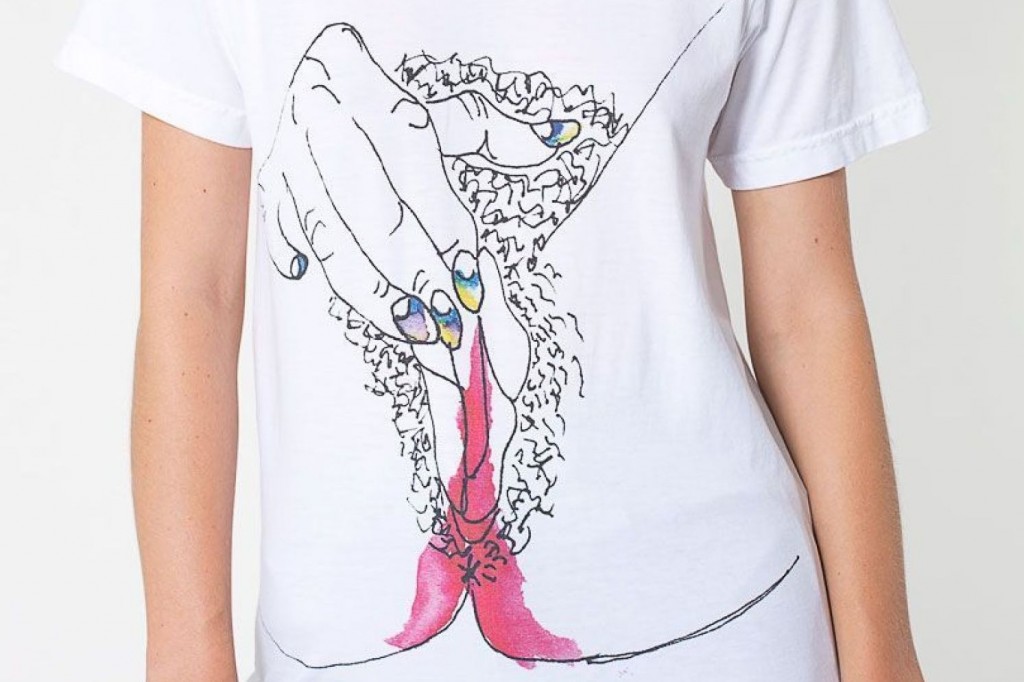
AR: That t-shirt received so much press, is that the project that really opened doors for you?
AL: Actually, not so much because most websites didn’t credit me. Maybe three sources did, even American Apparel didn’t. It’s nothing to do with Petra, she tells people that I drew it, but most places seem to only give her credit.
AR: How big of a role has the Internet played in your success?
AL: Huge. I rarely go to art openings and events, so all my commissions have happened through the Internet. For a while, social media was a really helpful tool, but I don’t use it so much for that anymore.
AR: Would you say you are in an artist community?
AL: Not really. I went to this dinner last night and the people who hosted it asked me to bring some cool artist friends and I had to disappoint them. I don’t really hang out with artists, for some reason most of my friends are music people.
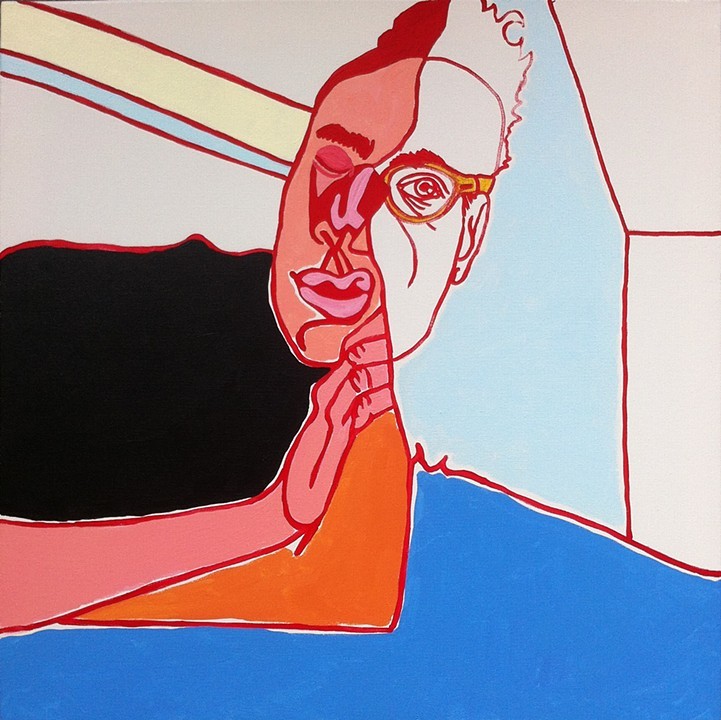
(2013), Acrylic on canvas, 20 x 20 in
AR: I read that an Instagram post lead to your collaboration with Calvin Klein for their S/S 16 Collection. Tell me about how that happened.
AL: Well, I followed Francisco [Costa], the creative director of Calvin Klein on Instagram, and it was such a timing thing. He posted a photo from his RTW collection and I immediately commented with a bunch of hearts. He saw the comment and clicked over to my page and started liking a bunch of my stuff.
Two weeks later I got an email from his assistant saying that he wanted to have a studio visit with me. So he came over with one of his designers and looked at some of my paintings. A month later he called me saying that he wanted to collaborate on his resort collection.
AR: How did that creative process work? Did you have any control over the final outcome?
AL: There were pieces that he really liked and wanted to work with, so I made 6 really large scale drawings that were sort of compilations of different pieces. I was so surprised because most of his stuff is so simple and mine is definitely very colorful and kind of crazy, so I couldn’t believe he wanted to work together. It’s funny, the final product doesn’t look anything like the drawings I made, but it totally worked. I loved it.
AR: I read in a Milk interview that the focus on fashion collaborations in your creative career is totally unintentional?
AL: Yeah, it’s weird. I want to show my artwork in galleries but I don’t go to art events so I’m missing that crucial element of making connections. Instead, different fashion brands have been seeing my collaborations on the Internet and commissioning my drawings. I just did this watch with the company Modify. They used 4 of my paintings for watch faces and they’re only like $50!
AR: Ideally where would you take your career next?
AL: I want to make paintings and show them in galleries. And sell them, obviously. I would like to do larger works but I haven’t recently because I don’t have a big studio. But that’s what I’m planning on…
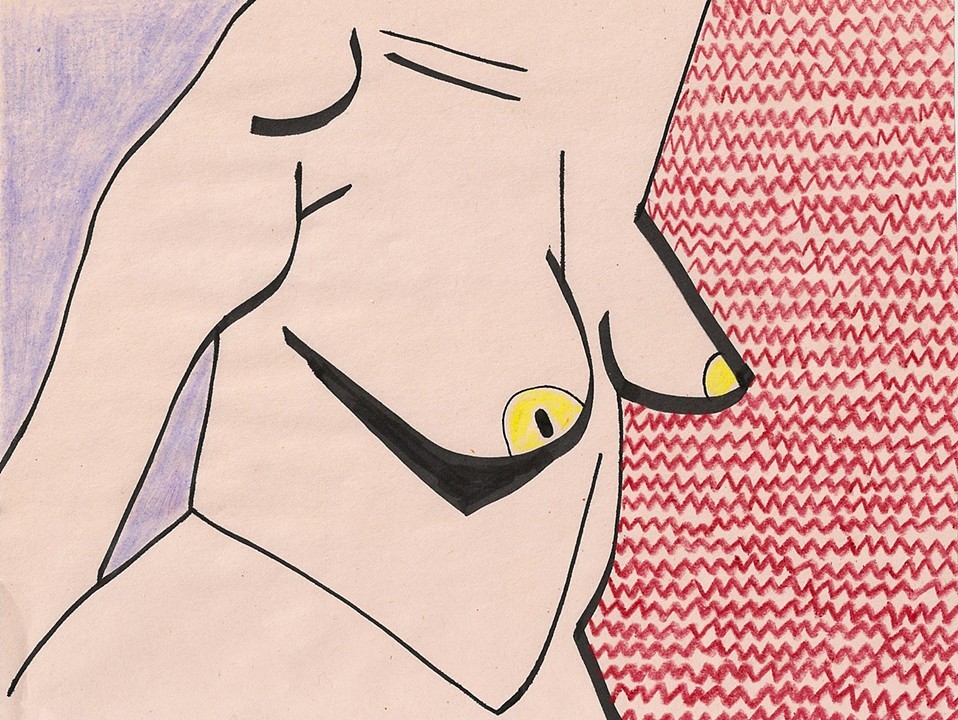
Marker and crayon on newsprint, 11 x 8.5 in
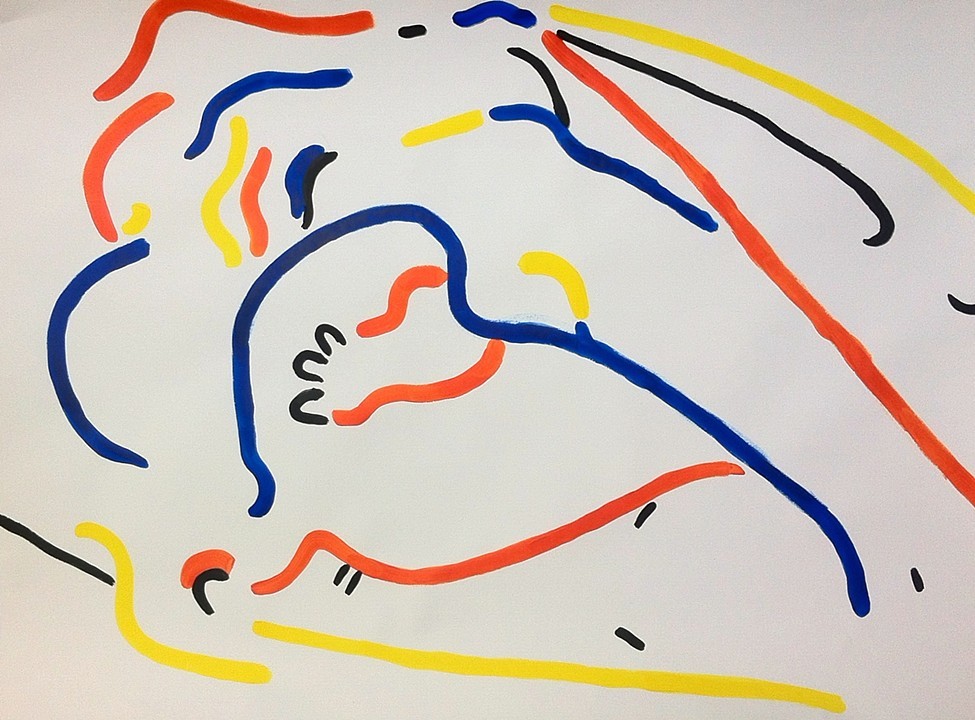
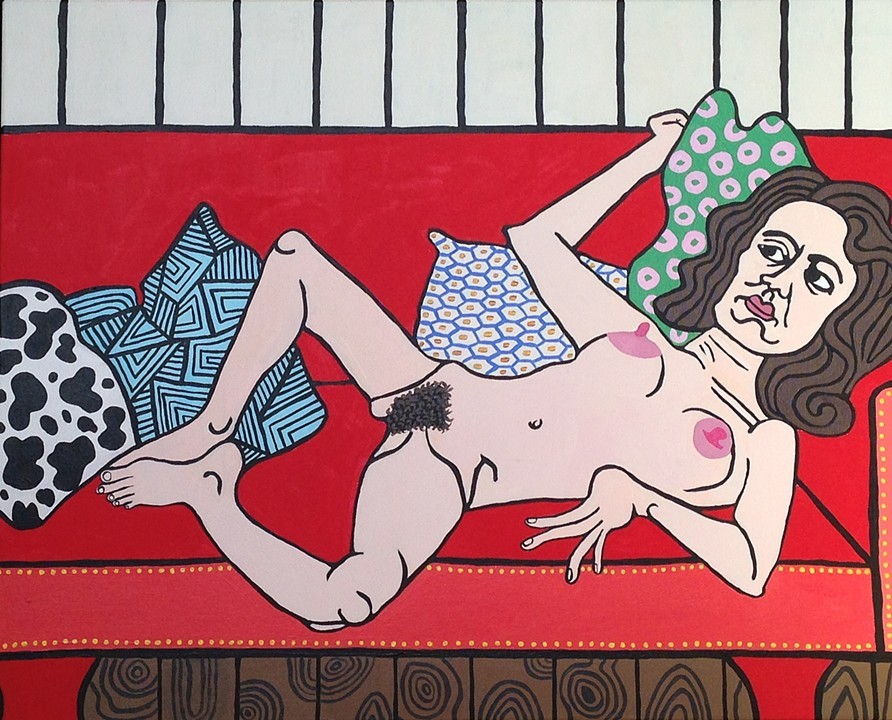
Acrylic on canvas, 30 x 24 in
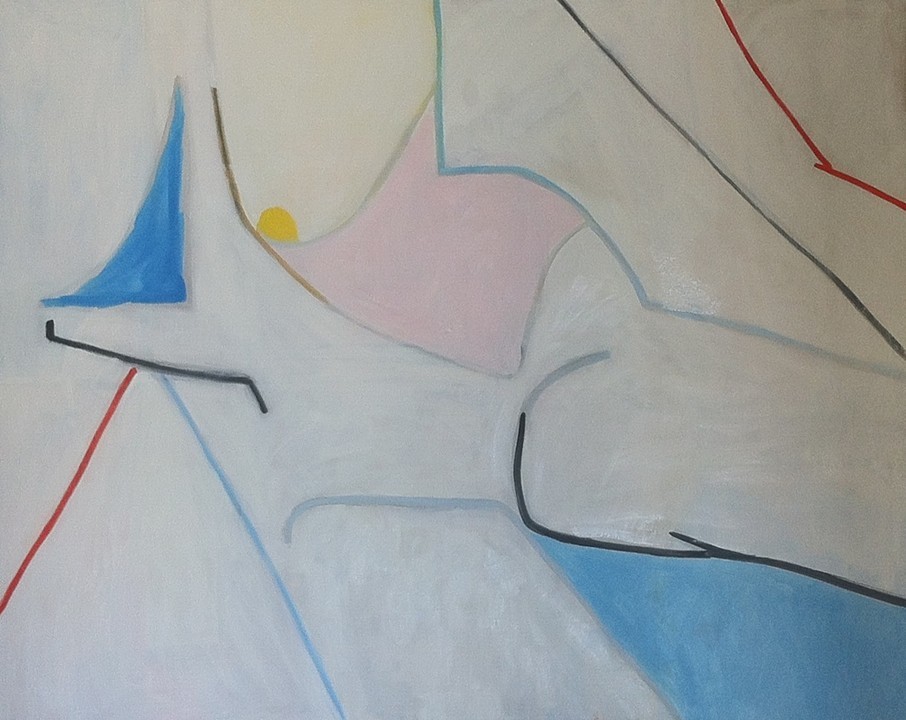
Alice’s name has recently been popping up in “Artist to Watch” lists in publications like the New York Times and W Magazine, so invest early – you never know how much that boobie painting may be worth in the future.
All images courtesy of the artist.
Like this article? Check out our interview of Lyle XOX, another artist that uses Instagram to facilitate his creative career, or other behind the scenes artist interviews.


